Composite construction or the process of vacuum bagging or laminating wooden skins over a foam core is the very high tech end of wooden surfboards. The purists may not view it as a wooden board in the way a solid or chambered board is to them. But technology is there to be used and move us forward and expand the possibilities . Here is Josh's story...
 Shaping since the age of 13, and working professionally in every aspect of board production, I always had an interest in alternative construction. I had consistently tried to break from the repetitive 6’2 squashtail formula in both shape and materials. Initially I was after durability and performance rather than the beauty of wood for its own sake, though that is a bonus I very much enjoy now.
Shaping since the age of 13, and working professionally in every aspect of board production, I always had an interest in alternative construction. I had consistently tried to break from the repetitive 6’2 squashtail formula in both shape and materials. Initially I was after durability and performance rather than the beauty of wood for its own sake, though that is a bonus I very much enjoy now.The path which took me to the boards I currently make has a bit of a story...
 Up to the minute design and wood skin composite construction
Up to the minute design and wood skin composite construction Beautiful and functional Paulownia skins
Beautiful and functional Paulownia skins Detail of high density foam plug reinforcement
Detail of high density foam plug reinforcement Tailblock detail prior to laminating...
Tailblock detail prior to laminating... The finished job.
The finished job. Paulownia has some beautiful grain
Paulownia has some beautiful grain Monsta Jacko's shortboard is 7' 4" x 21 1/2"
Monsta Jacko's shortboard is 7' 4" x 21 1/2" In Byron in the late 90’s I also did a stint with Bamboo surfboards Australia. It was here that I was first exposed to vacuum bagging, but their methods were prone to problems, hence I was wary, but the road led to EPS as the lighter bouncier option, and of course it can only be lammed in epoxy.
In Byron in the late 90’s I also did a stint with Bamboo surfboards Australia. It was here that I was first exposed to vacuum bagging, but their methods were prone to problems, hence I was wary, but the road led to EPS as the lighter bouncier option, and of course it can only be lammed in epoxy.I’d returned to Torquay and been producing my own label in “normal” construction for a while when a longtime customer traded my shapes for surftech! Thats not an uncommon experience amongst shapers, but it was my stimulus to attempt to make custom boards with similar durability...
So I got experimental...not for the first time!
I scored a panel of 2mm timber, from a pressed-ply chair manufacturer, and sandbag pressed it onto EPS. I also used carbon around the rails...This board was too small for me, but was ridden successfully by my mate steak, It looked butt-ugly because I’d lammed it with qcell in the resin to save weight.
 Around this time, 2004, a friend pointed me towards “Swaylocks” where a number of guys around the world were experimenting with composite boards. With “Pinhead” paying for the materials and myself doing the work, I took to vacuum bagging in the garage, and six months later the first Balsa railed EPS/Corecell composite boards emerged.
Around this time, 2004, a friend pointed me towards “Swaylocks” where a number of guys around the world were experimenting with composite boards. With “Pinhead” paying for the materials and myself doing the work, I took to vacuum bagging in the garage, and six months later the first Balsa railed EPS/Corecell composite boards emerged.  I was sceptical...the process seemed convoluted compared to conventional boards. These boards were yellow, expensive and time-consuming, but on my first surf I was convinced they were a step forward. The “twang” from the timber rail was tangible in bottom turns, becoming forward projection which saw me making sections from way behind at Winkipop. I was in love!
I was sceptical...the process seemed convoluted compared to conventional boards. These boards were yellow, expensive and time-consuming, but on my first surf I was convinced they were a step forward. The “twang” from the timber rail was tangible in bottom turns, becoming forward projection which saw me making sections from way behind at Winkipop. I was in love!  This is "Offcutter" The first flat to bend board produced by me under Firewire lable and still a regular ride at 7" x 18 3/4"
This is "Offcutter" The first flat to bend board produced by me under Firewire lable and still a regular ride at 7" x 18 3/4"Immediately I began to devise ways to make the construction simpler, and the next board was built from a flat slab of foam and wood sticks bent to a rocker rather than cut to profile. This allowed a saving on materials which was greatly encouraging.
I began to correspond with Bert Burger and Nev Hyman and soon became Research and Development technician for the fledgling Firewire company. I was paid to play around with the composite technology and to this day I have a quiver of my own shapes in variations on the balsa railed composite tech. It was here that I was able to fully develop the techniques I had initiated in the garage in Torquay and my inventions became the basis for the mass-production of Firewire boards.
This one is the original flat-to-bend construction prototype which became Firewire...Made in a garage in Torquay for fellow shaper Mark Phipps. The skins and rails are spliced together from offcuts of the first two boards. Note the Balsa/Corecell combo deck.
 My involvement with Firewire and Sunova dissolved with my becoming disillusioned in the shadow of more famous names. I returned to Victoria to take off where I had left off, and now I proudly put my name to my shapes and construction.
My involvement with Firewire and Sunova dissolved with my becoming disillusioned in the shadow of more famous names. I returned to Victoria to take off where I had left off, and now I proudly put my name to my shapes and construction.I’ve exchanged the use of Balsa for Pawlonia, a timber which is less water-absorbent if dinged. My supply is Australian grown, and I make each board by hand, absolutely custom.
Pawlonia also gives what are more interesting grain patterns than balsa, and I love to play
‘spot-the-hidden pictures” with the whirls and knots in the timber. With all-timber boards I find the stiffness factor means I have to compensate with added tail rocker rather than relying on the flex which High - Density foam skins allow. My orders are evenly split between wood, foam skins or a combination of both. I’m still most interested in cutting-edge design rather than retro...Having said that I intend to build myself some old-school single fin showpieces.
I can build a shortboard under 2kg on request, but I find that my customers are very pleased with a typical high-performance weight with the added durability of the composite construction.
Full-circle from corporate involvement in surfboard manufacturing back to my roots, I’m happy to be making my own thing and I relish having some stoked customers.
Josh
www.joshdowlingshape.com <http://www.joshdowlingshape.com>

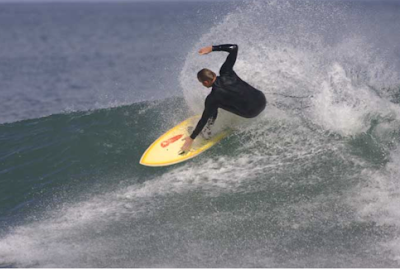
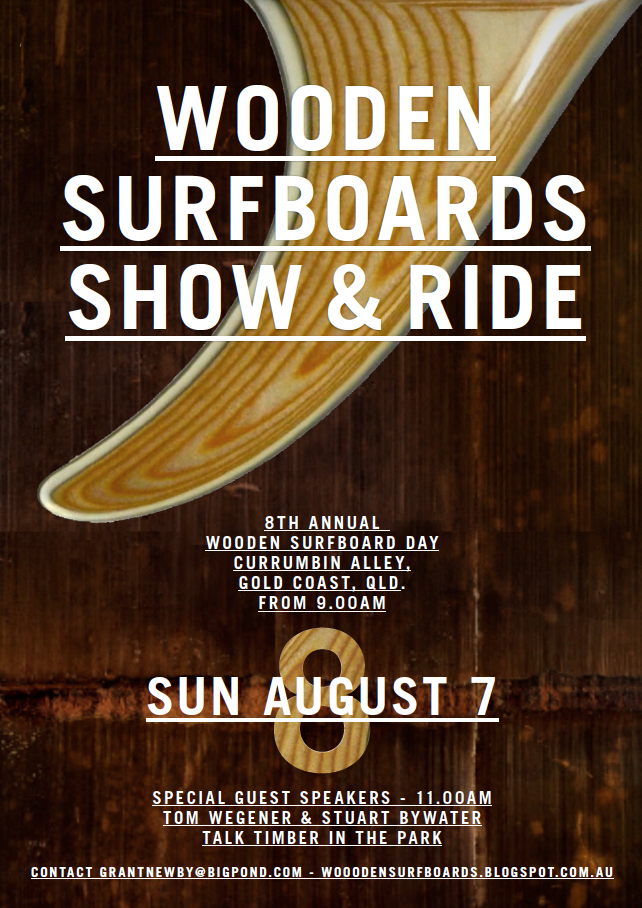
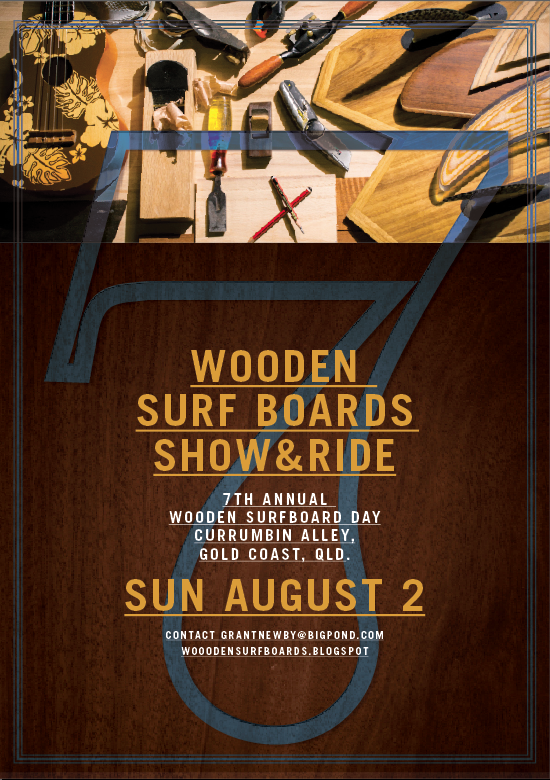
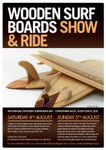
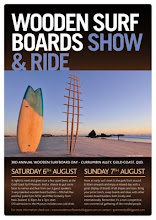

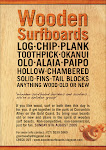



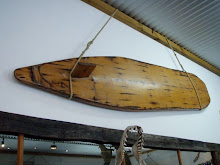














2 comments:
It's cool to hear a bit more of behind-the-scenes from some of these guys. I've been admiring Josh's shapes on Swaylocks for years.
Stoked to see you are building beautiful compsand boards mate...
They look insane.
keep ripping eh!
nev
Post a Comment